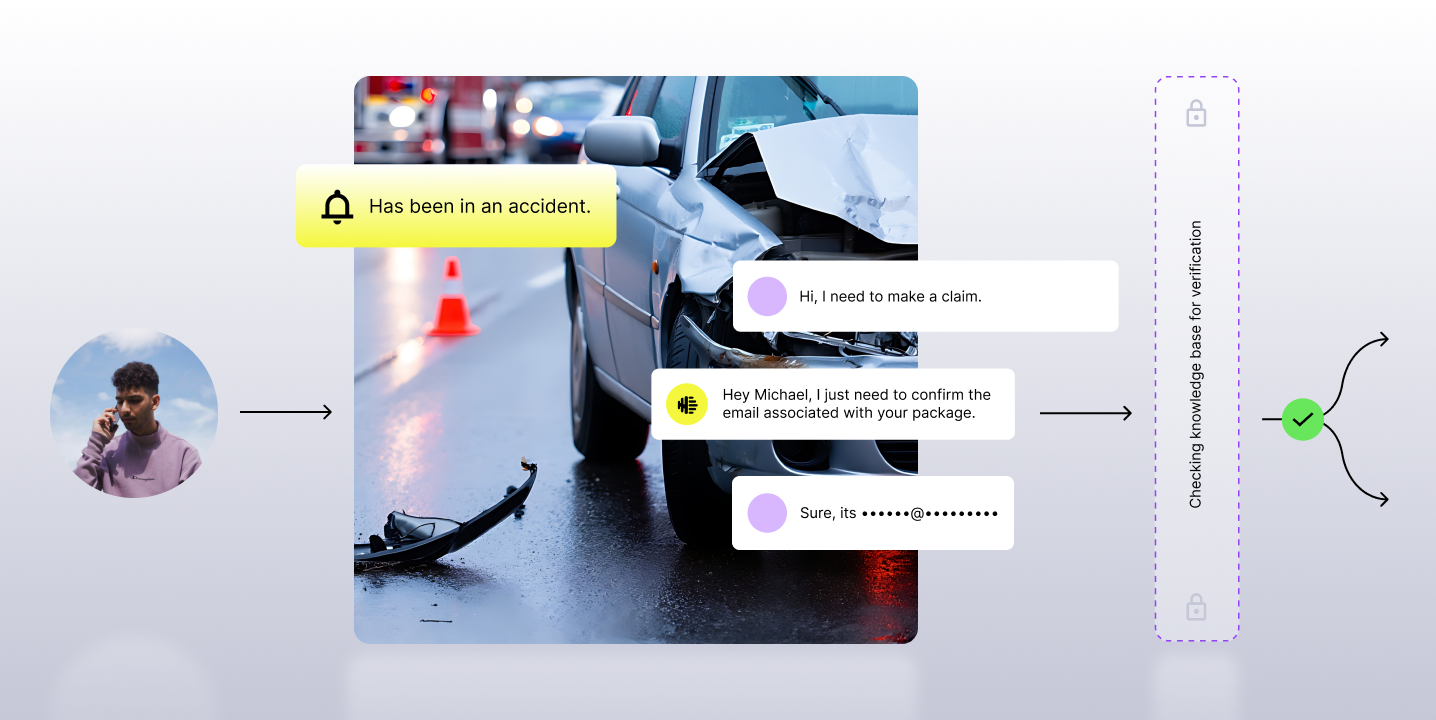What is a Supervisor Escalation?
A supervisor escalation, sometimes referred to as a call escalation or call center escalation, is when a caller requests to speak to a supervisor for resolution.
Supervisor escalation is measured through supervisor escalation rate, which is the percentage of total calls that are transferred to a supervisor. The industry benchmark for supervisor escalation rate is.

Why Do Supervisor Escalations Matter in Call Centers?
Supervisor escalations can be caused by a number of things, some of them outside of an agent’s control. Causes of call escalations include:
- Lack of agent confidence
- Lack of agent resources
- Lack of agent training
- Operational inefficiency
- Complexity of the query
- Sentiment of the interaction
- Nature of the interaction (eg. not receiving an apology)
- Issue with the product or service
The truth is, in most cases, a supervisor ends up with the same resolution for the customer’s query that the agent would’ve provided. In fact, it’s estimated that 85% of escalations could have been resolved with the initial phone rep. So managing and reducing supervisor escalations is key to contact center efficiently and can result in a big impact if ignored.
Reducing supervisor escalations is important because they:
Divert Managers From Strategic Tasks
Whenever supervisors are brought on to speak with a customer due to an escalation, they’re diverted from strategic tasks, including agent coaching, process improvement, and call analysis. That means less time is left to develop targeted training programs and identify organization-wide inefficiencies.
Impact Customer Experience and CSAT
Whether or not it’s in an agent’s control, supervisor escalations negatively affect overall CX and CSAT. Important contact center KPIs like First Call Resolution (FCR) and Average Handle Time (AHT) are directly related to supervisor escalations, and if those KPIs dip, supervisor escalations will most likely rise, and with it, customer dissatisfaction.

Supervisor Escalation Strategies: How Can Organizations Handle Supervisor Escalations?
Supervisor escalation rate strongly influences agent effectiveness, CX, and CSAT, but there are a number of steps organizations can take to reduce them.

Root Out Call and Escalation Drivers with Contact Center AI
At the beginning of this blog post, we outlined all the general causes of a supervisor escalation. Many of those causes can be resolved, or at least reduced, by understanding the underlying issue at hand. And that’s where contact center AI comes into play - allowing teams to monitor 100% of calls, identify supervisor escalations, and uncover the cause.
Take operational efficiencies. Contact center AI can identify what inefficiency or gap is causing a supervisor escalation, and reduce them across the organization.
For example, if agents are unable to process a certain type of request to resolve an issue, and always require supervisor approval, escalations are naturally going to be higher. By identifying what those types of requests are and alleviating the agent restriction, supervisor escalations will come down. But it's crucial to analyze call escalation drivers across 100% of calls, not just a small sample.
.png)
Maintaining a Dynamic Internal Knowledge Base (IKB)
A dynamic Internal Knowledge Base (IKB) is a crucial self-service resource for agents in contact centers. The IKB must be easy to access and search, and seamlessly deliver useful information to resolve cases. Just as important as the agent UX is the consistent and intelligent maintenance of the IKB by supervisors and managers so content is kept up-to-date.
The key to reducing supervisor escalations is using insights from 100% of voice calls, determining what new, targeted content to include in the IKB. Even better, include snippets of calls and moments so agents can hear two different approaches to handling the same escalation.
Focus on First Call Resolution (FCR) KPIs to Mitigate Supervisor Escalation Rates
First call resolution (FCR) goes hand in hand with supervisor escalations. By enabling agents to improve through tailored, data-driven training, they’ll be more equipped to resolve customer queries on the first call. In turn, this will bring down supervisor escalations. Important contact center KPIs that influence FCR and supervisor escalations include:
- Average Handle Time (AHT): Average duration of the entire transaction, from the time the customer initiates the call to ending the call, including all hold times and transfers.
- Average Speed of Answer (ASA): Average duration for calls to be answered. Often, the longer the ASA, the more unhappy or impatient the customer will be when they get connected to a rep.
- Dead Air: Total duration of silence on a call. Dead air is characterized as any period of silence over 10 seconds. Continuous stretches of dead air increase the chances of a supervisor escalation based on the customer’s perception the agent can’t help them.
- On-hold Time: Average duration that a caller is on hold. Organizations will often monitor for Hold Time Violations, when a pre-set benchmark is set and the On-Hold Time is exceeded. The longer a customer is on hold, the more negative the experience, and the higher the chances of a call escalation.

Data-driven Escalation Training Programs
There are a number of strategies for reducing call escalations, but creating high-impact training programs are key.
When it comes to customer experience, focusing on training agents on methods for reducing escalations is key. Conversationally, this includes agents laying out multiple options, empathy, and critical listening. From an operational standpoint, this could be providing tools and permissions for de escalation. This might include giving the agent the flexibility to offer coupons, promo codes, or to make exceptions in certain cases.
Looking Forward: Realtime and Augmentation
On the horizon for contact center technology is real time support and agent augmentation. That means providing agents with live assistance from managers who are alerted when an escalation is taking place. Or, enabling an AI service to suggest a next next course of action that the agent can take to resolve the escalation swiftly.
These opportunities will significantly reduce the volume of escalations and time spent handling them by quickly getting agents the help they need to resolve customer queries. It will also improve consistency, which is important when trying to maintain a strong brand.
Dealing with High Call Escalation Rate?
End-to-end quality management is the key to bringing it down. Check out our guide on using AI to Reinvent Quality Management in the Call Center. In it we provide actionable insights and best practices from industry leaders, including approaches that will help you improve call center KPIs, including supervisor escalations.
And if you're dealing with a massive surge in call center queries, download our Playbook to Handling Call Center Surges Like a Pro, which includes tactics on creating an Incident Response Plan for better preparing agents to handle high call volumes.

















